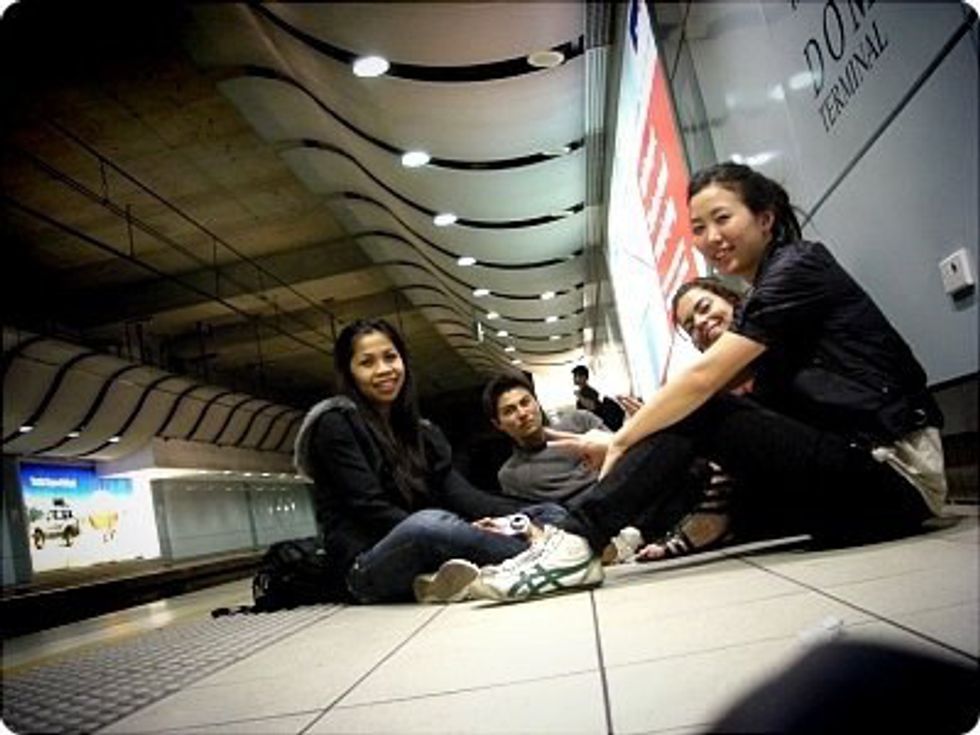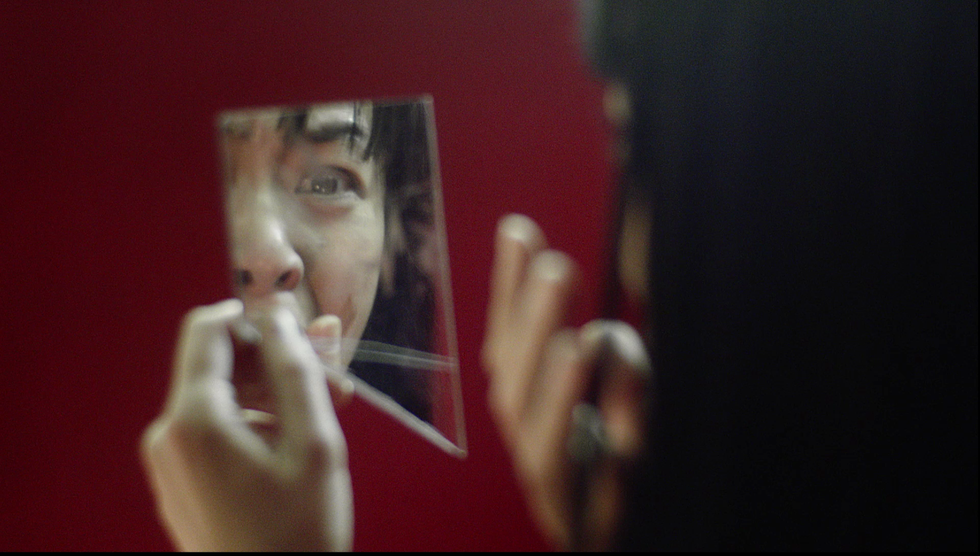Following a filmmaker in the beginning stages of their career is something that is often overlooked, but it is indeed crucial to how the rest of their career is shaped and how they mature as artists. Upon readingSomething Like An Autobiography by Akira Kurosawa skips all the years when he was already prevalent in the film world (around the time when he made Rashomon) and started when he was a child. He goes into great detail of life events that arguable shaped his life and it can be seen in all of his works. He learned and did everything form set construction to lighting and everything in between and learned how to make films from every aspect. It's what gave him the confidence to be a director.
Works like Something... don't come around often enough, so to understand the rise of a up and coming filmmaker, to understand their work as their career progresses, we must start from the beginning of their lives and work up until the point when they become relevant. This is what I intend to do for South Korean filmmaker Deukyun Hwang. While this won't be as in depth as Kurosawa-san's autobiography, it certainly will give context to a career in the making.
Deukyun Hwang is a South Korean filmmaker who didn't know she wanted to specifically be a filmmaker until much later in her life. She was born in Seoul in 1982 when having a female baby wasn't desirable. In fact, many people had abortions if they found out they had a female fetus growing inside them (this was mainly due to the government's pressure to keep families from having more than two children, which for many reasons has turned out to be problematic in South Korea today and in the future). Sunny, as her friends an colleagues refer to her as, considers herself incredibly lucky to be alive, and justifiably so. Since this discovery, she has decided to not take any moment of her life for granted and set out to live her life to the fullest.
Deukyun (front, right) with some friends in Sydney, Australia. 2008. Photo: Deukyun Hwang.
Dropping out of college and quitting her job when she was in her early twenties, Sunny embarked on adventure. Having loved the arts since she was young, she felt trapped in her life trying to become a normal member of society, as her older sister has done, in a sense. She packed up and moved to Australia, only knowing a little English and having no real skills doing anything. She became a bar tender in Sydney and stayed there for half a decade. From being a bar tender, she was able to meet a diverse group of people, ranging from business folk to artists. From there, she's traveled all around Australia, ventured from Cuba to Taipei, and eventually settled into New York City to pursue her dream of being an artist.
Traveling all over the world prepared her for the culturally diverse population that take over NYC. She took in a lot of theater, museums and cinema upon her arrival - having no friends in a city of 8 million people. While the subway system itself wasn't new to her, NYC Subways are far different than the ones of Seoul's and other cities. This is where she became acquainted to the large number of street artists that perform on the platforms and in the streets. This is what inspired her early film work.
The film itself, while about the struggles of being an artist in NYC, also takes a reflection of the people who view art and the artist. It's fitting that a rich man in a suit, asking for a sexual favor, represents how the big wigs in Hollywood continually screw over the artist and their vision. But to have the camera, 'The Mirror', (which the specific camera, made by Canon, has an actual mirror inside of it) shoved in his face, he sees his true ugly nature. But that Mirror is shown to everyone - people don't value the hard work, money and dedication it takes to create a beautiful piece of art that is meant to be enjoyed by all. Sunny at this point in her life has time and time seen this very thing, both figuratively and literally in context to the content of the film.
It's also very, very worth noting of Sunny's love for paintings. While new in NYC, she has taken gigs shooting videos for Art Galleries of a diverse selection of artists. Her love of the free floating emotion and not being bound to just a single canvas, or in her case frame, is quite apparent. The way her camera pans in he beginning of "The Mirror" is nothing short of one observing a canvas, reading right to left. Accompanied by only music, which you'd hear in gallery openings, she wants someone to subconsciously believe they are looking at a painting she has created. The guitarist, played by Lisa Sperry, goes through a roller coaster of emotions, from melancholy, sadness to joy and anger. All executed simply by us simply observing, like one would a painting.
Still from "Anemone", directed by Deukyun Hwang. 2015. A nod to her early film "The Mirror."
Jump to her next film, "Anemone", everything is controlled in the artistic realm. She leaves audio as a device to enhance the emotions she paints in her frame, but her canvas is wild and changing. If "The Mirror" is a sole canvas, then "Anemone" is an entire exhibit. While one of her first films is in all black and white, "Anemone" is drenched in color. Symbolically, the walls are a character themselves, taking on the emotions of the main character, played by Eiko Kawashima. Like Lisa Sperry's character in 'The Mirror', Eiko Kawashima's character goes through a roller coaster of emotions, and justifiably so. From being raped by countless soldiers, PTSD, and the army taking away her child to never be seen again, Eiko's journey is one plunged into pain and suffering. As beautiful as some shots may appear, the walls never lets us for a moment forget the reality of Eiko's mental state. Tainted white walls during the first time she is raped (white symbolizing purity and the dirt and filth covering it symbolizing the removal of said purity) to the deep, angry red when she sees herself for the first time since before being abducted and when her child is taken away, her use of color is that exactly of how a painter uses it to convey emotion and symbolism without writing a single word.
Still from "Anemone", directed by Deukyun Hwang. 2015.
Up front it's a feminist film about how women are treated during a war, but a piece of Deukyun's soul rests in this film; she takes her life into her own hands and slaps it onto celluloid. While her mother was not a comfort woman, the baby Eiko's character gives birth to could represent herself, a child born during difficult times and could have been killed by the hands of the Government (this is more literal in the film). Every breath is a lucky one for her, so she takes her art to speak about the injustices committed on women, like as other women who would have been her age, like Eiko in her film, and all other people suffering in their life on Earth.
Still from "Anemone", directed by Deukyun Hwang. 2015.
Deukyun has a decorated list of films produced, which have been exhibited around the world and have won numerous awards. But the one project to come full circle for her career is the new documentary about street musicians in NYC titled "Time To Play." Her desire to give a voice to those who remain voiceless and to prop up the art scene is on full display here. The film centers on a diverse group of musicians who, up until now, remain just random people performing music on subway platforms. But to go below the surface, there are people in difficult situations who play not only but for the love of music, but more profound and personal reasons, some of which have been directed by the will of God himself. Deukyun stays more behind the scenes of this film, using her profound knowledge of being a Producer to get this story told. But her voice is in no way muffled. Behind every frame, every story, every event, Deukyun's paint brush is there, ready to convey a new set of emotions out of the plights of suffering.
Trailer to "Time To Play" produced by Deukyun Hwang. Coming in 2017. For more information, visit https://www.timetoplayny.com


























 sunrise
StableDiffusion
sunrise
StableDiffusion
 bonfire friends
StableDiffusion
bonfire friends
StableDiffusion
 sadness
StableDiffusion
sadness
StableDiffusion

 purple skies
StableDiffusion
purple skies
StableDiffusion

 true love
StableDiffusion
true love
StableDiffusion
 My Cheerleader
StableDiffusion
My Cheerleader
StableDiffusion
 womans transformation to happiness and love
StableDiffusion
womans transformation to happiness and love
StableDiffusion
 future life together of adventures
StableDiffusion
future life together of adventures
StableDiffusion





















